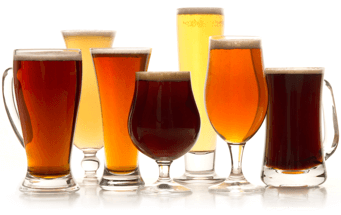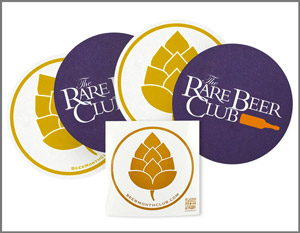Jester King Craft Brewery - Gotlandsdricka
-
ABV:
6.5% -
Serving Temperature:
48-55° F -
Suggested Glassware:
Pint Glass, Mug, Drinking Horn or Leather Bottell
Gotlandsdricka is the indigenous beer of Gotland, Sweden’s largest island, located in the Baltic Sea between Sweden and Latvia. Similar in many respects to Finland’s native brew, Sahti, this is a type of beer that typically relies on juniper—both berries and twigs—and is typically made in the home or farmhouse according to traditional recipes. The name means “drink of Gotland” or translated further, “drink of the good land.” Both styles also tend to have rye and oats in addition to malted barley, and often use local herbs, and in the case of Gotlandsdricka, sometimes local honey. Though Gotland is a relatively small land mass, at about 30 miles wide by 100 miles north to south, due to local, often family-based recipes, there is quite a wide interpretation of the style; one person’s homebrewed Gotlandsdricka is quite likely to taste very different than another’s. Unlike most Sahtis, however, Gotlandsdricka tends to rely heavily on wood-smoked malts. In the days before brewers’ yeast was cultured, many Gotlanders used baker’s yeast, sometimes by way of actual bread loaves, or relied on wild yeasts and bacteria cultures residing on the juniper sticks used to stir the brew. Sometimes, like Sahti, the wort is not even boiled, which results in a shorter shelf life and a tendency to sour under the influence of bacteria.
Today the population of the Gotland is approx. 57,000, and residents have much to boast of from their cultural heritage. Human presence here predates history, with evidence of civilization dating back to at least the Stone Age, though perhaps the most enduring legacy is that of Viking culture and the middle ages. It’s not clear when something resembling today’s “average” Gotlandsdricka was first brewed (and truth be told, any native beer brewed there at any point would be, by definition, a Gotlandsdricka), but as is typical of insular cultures, most everything is sourced locally, and, traditions endure a bit longer than is often seen on the mainland. Primitive, raw, wild beer, Gotlandsdricka is indeed a rare, traditional style.
Considering this, when Jester King set out to try their hand at what we believe is the first commercially-brewed example of the style in the US, they were keen to focus on use of juniper, smoked malts, herbs and low hopping rates. They make no claim in trying to brew an historical recreation of the beer. They were simply inspired by the farmhouse legacy and ingredients of this obscure style as it’s fitting with their own farmhouse brewery. To this end, they used juniper and sweet gale, toned down the hops (to less than 0.4 lbs per barrel), and employed three different types of smoked malts, each smoked with different woods—beechwood & birchwood on the malted barley, and oak for the smoked wheat. In fact, an impressive 91% of the grain bill was smoked! (The other 9% being non-smoked rye.) Grab your favorite Viking-themed drinking vessel and let’s set out to explore this “new” brew…
Jester King Gotlandsdricka pours a deep straw color, topped with a lush, pillowy white head. First impression is of smoke and yeast—a characteristically “raw” beer aroma, old school style, maybe even before school was around (pre-school? No, no, that’s not right…). Expect notes of honey-meets-toffee, with some melon-esque notes (à la honeydew melon). Smoke is not overbearing—which is a bit surprising given the heavy-handedness on smoked malts—but it’s definitely a key, deeply-embedded component of the brew. We picked up a bit of a woodsy quality too—earthiness, sticks and detritus. Look for a nice “lift” from the juniper to hoist things off the malt focus, largely taking the place of hops and balancing the sweet/malt notes. Also look for notes of smoked apples, white grapes, orchard fruits and lychees, rounded out by a slight berry tartness. We picked up suggestions similar to a smoky Islay Scotch as it came to full warmth. From start to finish, the smokiness remains prevalent, but well-balanced as an additional flavor element rather than a suffocating presence that so often weighs down and smothers smoked beers. We actually found the body nice and medium-light, despite the girth in the flavor profile—being almost gentle upon the palate. Finishes quite dry—with an almost porter-like dryness (no roastiness, just that chalky dryness sometimes found in porters), with a slight chardonnay/gewürztraminer vinous quality breaking late. On the back end of the finish, there’s a firm bitterness supplied by the sweet gale—a more herbaceous type of bitterness than one typically gets from hops.
Overall, a very tasty beer that we’re very proud to debut for you. While it may not be an historical recreation, we do feel it’s an historic occasion, and wouldn’t be surprised if we start seeing more Gotlandsdricka being brewed domestically once the word gets out on this intriguing style. Our members will be among the very first to have sampled it. In fact, if you’re trying to “check off” a list of styles that you’ve experienced, you probably won’t yet even find this one listed… (Hopefully there’s a “write in” option).
Only one batch of this beer was made. It will first pour on September 28th and 29th at the Borefts Beer Festival at Brouwerij de Molen in The Netherlands. It will make its stateside debut a week later at the Texas Craft Brewers Festival in Austin on October 6th and at the Pints for Prostates Denver Rare Beer Tasting IV on October 12th during the Great American Beer Festival. Following its debut at the festivals, a limited amount of naturally conditioned kegs, casks, gravity kegs and bottles will be released in Texas.
Cheers!
Jester King Craft Brewery is an authentic farmhouse brewery located in the rustic and beautiful Texas Hill Country just west of Austin, Texas. But don’t let the name fool you; these guys are no joke. In the 20 months since we first featured Jester King, back when they were in their first official month of operation, they have undergone a number of changes and taken on big challenges. One thing that hasn’t changed is the fact that they remain focused on creating artisan ales of great depth and character while outright refusing to take the safe approach. This means often doing things the hard way, using expensive ingredients, from organic malted barley to Kopi Luwak (aka civet coffee) and risky fermentation approaches, like barrel aging with microbes other than typical brewer’s yeast.
Oh yeah, and then there was that time that they sued the state of Texas (more specifically, the Texas Alcoholic Beverage Commission) in Federal Court for violation of their constitutional rights. And won. We can’t get too into the details, as we’re short on space, but basically, the state of Texas has (well… had) rather arcane laws when it came to labeling beers, which in many cases forced breweries to inaccurately describe or suppress the style being offered (an example: having to call lager in excess of 5% ABV an “ale”). Exercising their rights under the 1st and 14th Amendments to the US Constitution, a federal judge sided with Jester King, and now beers can be properly labeled in Texas, and, breweries can now tell people where to find their products (the simple act of listing a store where their hard to find products could be found was against the law!). Yup, it’s been a very busy first 2 years for Jester King.
The late, great beer writer Michael Jackson once remarked on Austin, Texas’ counter-intuitively rich beer scene. In the heart of a land not known for good beer, the Austin environs had numerous brewpubs, breweries and offered a welcome breeding ground for better beer culture. Even the late Pierre Celis, famous resurrectionist of Belgian Wit beer, that famous beer style of conversion that has provided the “wow moment” for many who now enjoy craft brewed beers, settled there in the 1990s to open his US brewery. Austin, the capital of the largest Bud-Miller-Coors-frenzied state in the union, is unlike much of the rest of the state. A small dot of blue in a sea of red on those election night political maps, there’s generally a more progressive attitude displayed by its inhabitants. That helped foster quite a bit of creativity and growth for craft brewers in the microbrewery boom of the 1990s. But it didn’t last. The various downtown brewpubs were almost all shuttered, Celis’ own brewery was dismantled, and a few breweries evaporated in the brutal heat of Texas’ overall feelings about better beer. To the rest of us who live elsewhere, when we thought of Texan beer, we generally thought “Don’t mess with Texas.”
One thing that the state does have going for it, which should translate to support of local beer makers, is a fierce sense of pride and loyalty to all things Texas. Unfortunately, it’s been tough to muster the same support for her breweries as her college football teams, especially if the brewers take risks by creating anything other than pale, light lagers or tame ales. But a few have pulled it off, helping turn a reluctant populace on to the idea that new things in beer [which are much more like old things in beer (as in pre-Prohibition)], can and should be embraced and endorsed. However, there’s been a sort of compromise deployed along the way. For most of its recent history, Texas’ craft brewers have had to be rather careful not to stray too far off the map, sticking to more traditional, almost “starter” beers in their lineups. It was a training wheels approach that seems to have lasted a bit longer than in other states.
That being said, the local craft beer movement has recently pierced that balloon, and what’s rushing through the aperture is even better beer. The next whoosh of Texas breweries has hit the scene at a rapid pace, with the Austin area seeing no less than eight breweries (or brewpubs) set up shop over the past two years. The Jester King Craft Brewery was one of the first during the recent reboot of the local craft beer renaissance. They have a passion for marrying the extreme with poise—which means some of their beers are made using techniques like open fermentation, oak and whisky barrel aging, bottle-conditioning with wine yeast, or are brewed to 10%+ ABV, but remarkably, for novel domestic craft beers, they remain refined and balanced—in line with old school farmhouse traditions.
The exciting adventures in craft brewing continue, emblemized no better than what’s happening at Jester King Craft Brewery. We encourage you to check out their regularly updated blog, at www.jesterkingbrewery.com/blog to keep up with their continuing escapades. And friend them on Facebook, follow them on twitter, etc.—let the overstimulation commence!
www.facebook.com/pages/Jester-King-Craft-Brewery/124349183648
www.twitter.com/jesterkingbeer

Unmatched Variety by style, brewery & country
Choose from Five different Beer Clubs offering unmatched variety by brewery,
country of origin, and beer style to suit your specific tastes.


